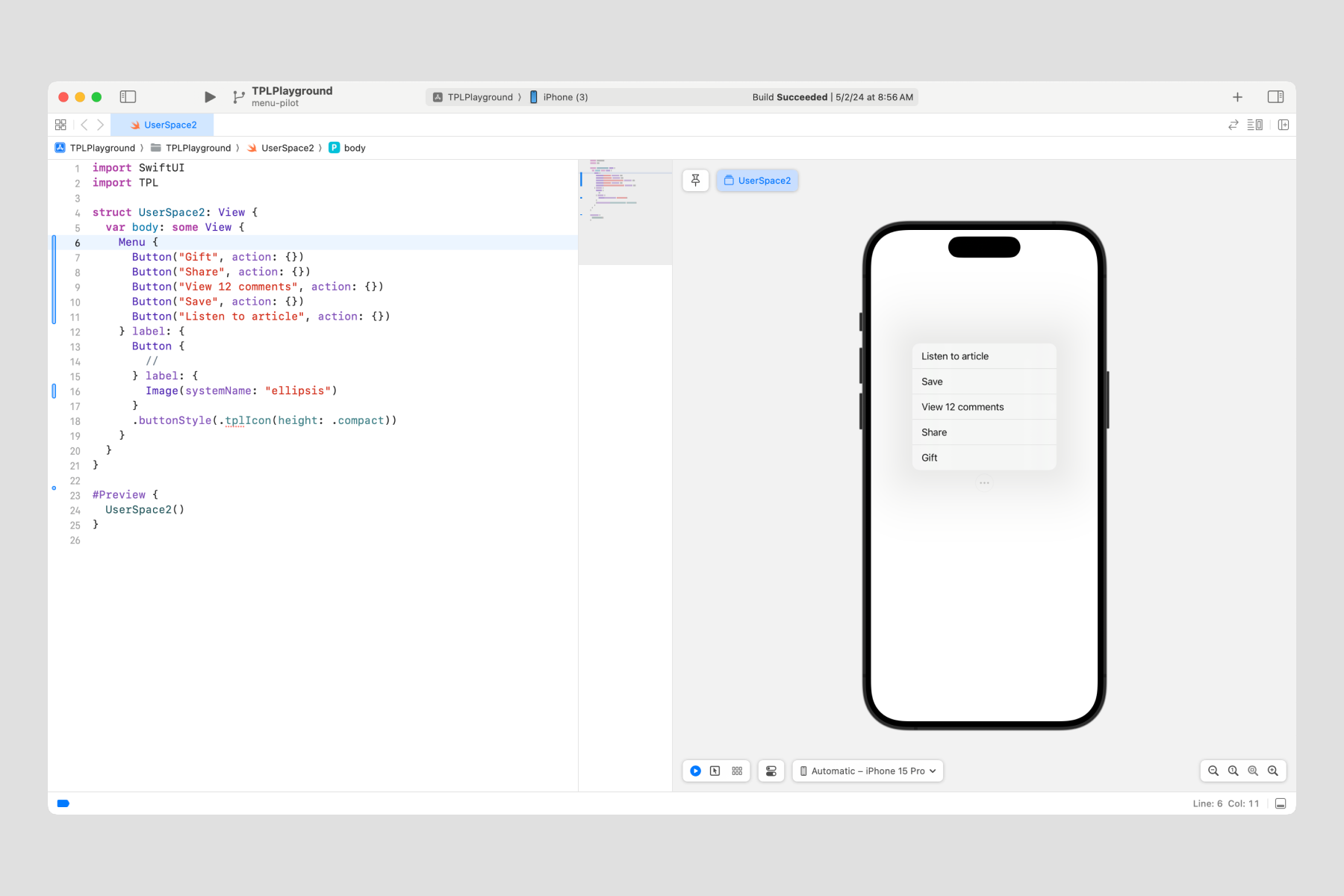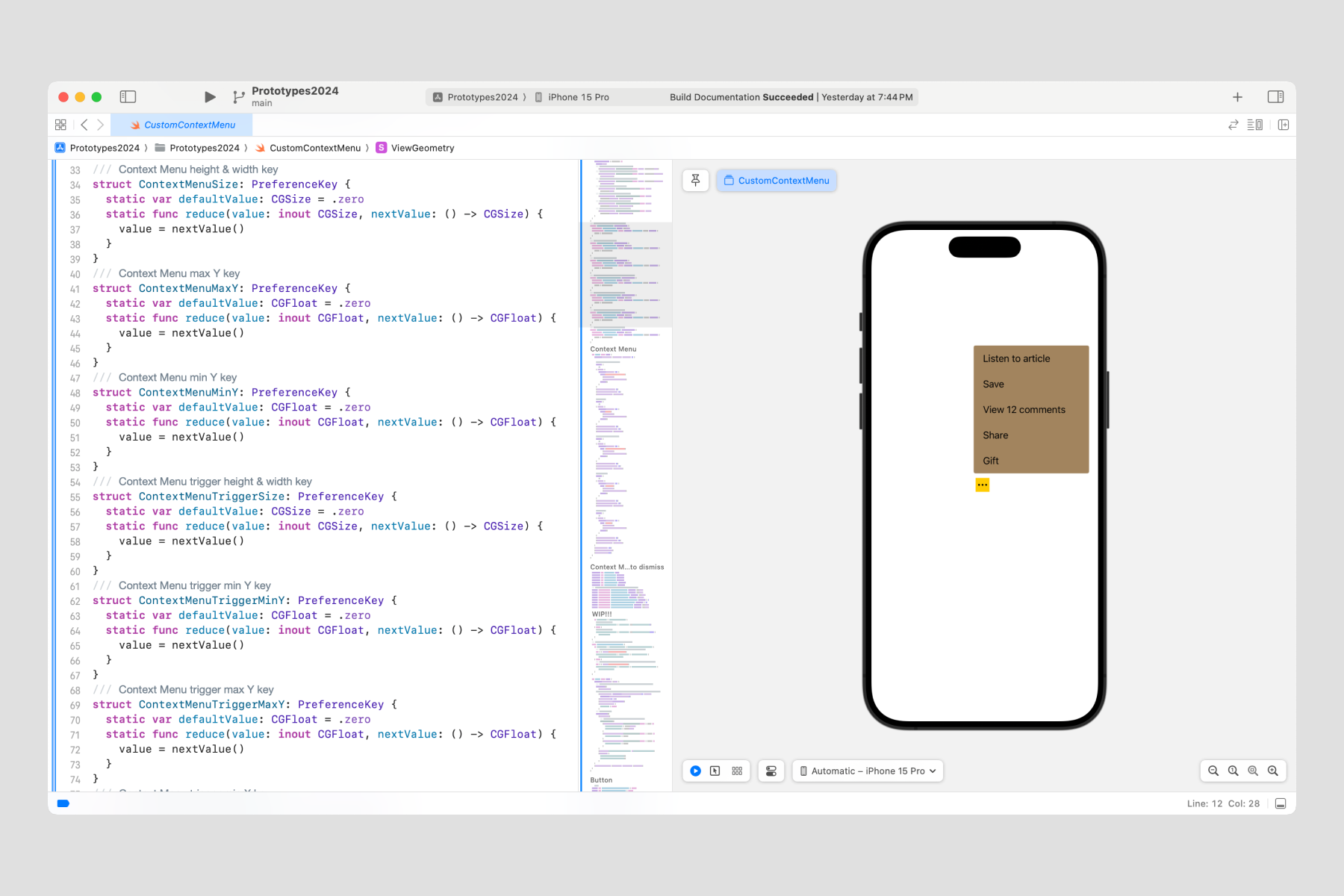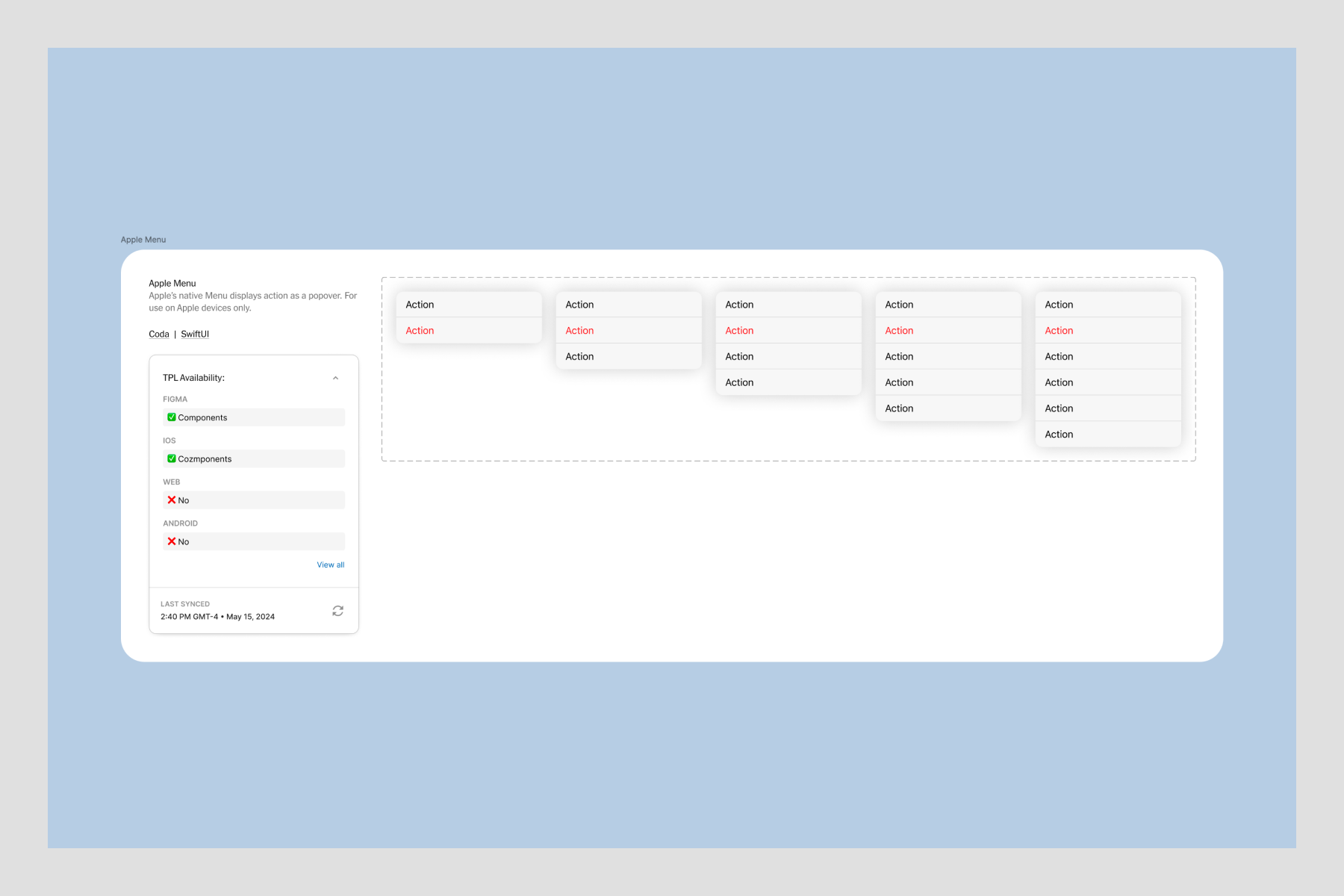Swift Tales 2
July 2024 — In the next installments, I’ll chronologically talk about the two new iOS components we shipped in TPL. This first was a popover menu we called “context menu”.
Team and timeline
I led design and code prototyping. Joseph Kohlmann led engineering. Sergio Cuevas contributed engineering. We completed this work in 1.5 months.
Punk
When Dan Mall started working with the team, he encouraged us designers to find ways to work as close to engineering as possible.
Until then my style of engineering collaboration was punk—sneaking around expectations to use my coding knowledge to form cross-discipline friendships and make cool stuff happen.
But without the expectation of staying in my lane, in what new ways could I be punk? I thought: If I wanted to get close to code, what if I set aside Figma, the defacto tool for designers, altogether?
Collaboration
I needed help from Joe and Sergio from the get-go. This is the main stuff they helped me learn:
- Xcode: Set up a simple preview environment, connect to the iOS-TPL repository, get rid of errors
- GitHub: Get auth tokens, connect to the NYT repository, commit, fetch, pull, push
- Tower: Save myself from Terminal
- SwiftUI basics: How to use our iOS-TPL tokens and who at NYT to ask for advice
- Jetpack Compose: While Android is not a supported library yet, I wanted to at least picture how everything might come together one day
But once I could get stuff done on my own, I still wanted to work with Joe and Sergio. Dan calls this way of collaborating “hot potato”, where 2-3 independent contributors pass the work between each other synchronously. This was a speedy way to vet ideas and observe engineering life. Engineers are TPL customers at the end of the day.
But they’re not my only customers. I also serve the Brand team. Brand must sign off on all of my work, which I honestly love. Not just because they’re awesome people, but also because designers and engineers alike want our stuff to look and feel excellent across the Times.
The way I see it, my role as a design/eng hybrid is to convince Brand and Engineering that they want the same things. And my role as an accessibility subject matter expert is to build something that works for everyone.
In the case of context menu, however, little compromise could be had.
Prototypes
Okay, maybe I’m a tad clairvoyant. I knew Brand would prefer a fully custom popover menu. (I did too.)
But through prototyping in Xcode, I learned that anything that requires dynamic positioning based on screen bounds is troublesome in SwiftUI. Unlike web, SwiftUI has stricter parent/child relationship rules that make it challenging to program context menu to act as expected. I was in a bind.

An example of z index on the web (left) and in SwiftUI (right) with the same parent/child relationships. SwiftUI does not override the parent.
Joe felt strongly that within our timeline building something custom wasn’t feasible. He also pointed out the future cost of maintaining something potentially fragile and complicated especially when SwiftUI already provides a very similar component, Menu. (And it’s so easy to use).
Through this experience, I helped develop a philosophy the TPL team now tries to stick to:
- Dig into the SwiftUI docs for solutions (and create a prototype)
- Test how much can be customized and review with the Brand team (and create a prototype)
- If that fails, quickly gauge how difficult it is to go full custom and review it with Brand and iOS engineers (and create a prototype)
- Either agree on visual design compromises and lean toward SwiftUI conventions or communicate the time and cost of going fully custom (and create many more prototypes)
As you can tell, I love prototypes.
I created an example of a SwiftUI Menu and discovered that the only detail we could adjust were optional icons next to the text (which, after reviewing with Brand, we hoped to avoid using anyway).

Next, I attempted a fully custom version which required 340 lines of code (see the prototype in GitHub). Showing Brand the sheer magnitude of the time and effort to go fully custom was enough to convince them to stick to Apple’s native Menu.

Reviewing our decision with iOS engineers was very reassuring. I think they were relieved by how creatively and harmoniously we all agreed that sticking to Apple convention was the right choice.
Summary
I saved the team at least 3 months of time and effort by gaining agreement from Brand, Product Design, and Engineering to use Apple's native Menu. I built 7 prototypes to thoroughly vet several directions, implementing GeometryReader and Alignment Guides. These became useful tools for future components.
Yes. I did use Figma to sketch some ideas. I’m a punk, not a masochist! Plus I needed to offer a nice component for designers.

In the next installment, we’ll dive into another iOS component!